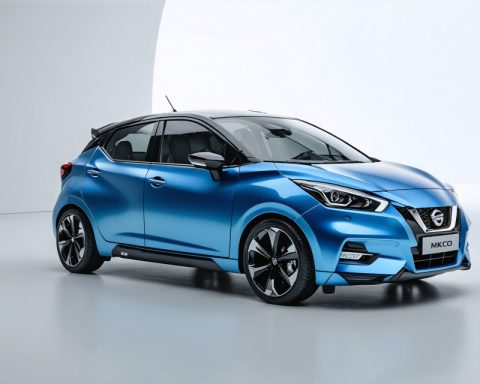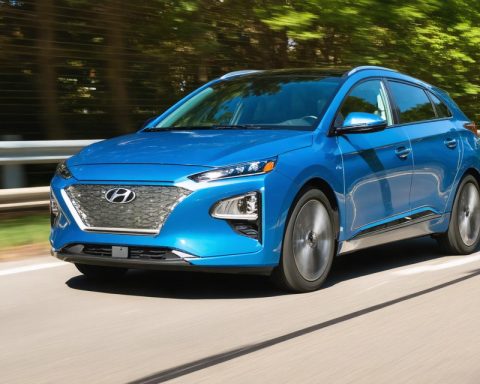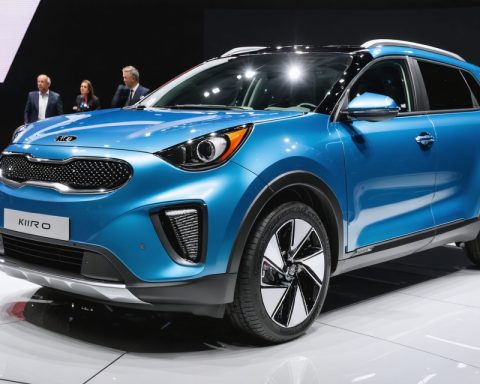- Electric car buyers face critical choices as upcoming tax changes loom.
- Vehicles over £40,000 will incur a new luxury car tax from April, adding £425 annually from the second to the sixth year.
- Vehicles under £40,000 are unaffected by the luxury tax but will see a standard VED rate of £195 per year.
- First-year VED for all electric cars will introduce a £10 fee starting in April.
- Company car owners will see incremental BIK tax increases from 2% to 3% beginning this April, rising annually through 2028.
- Strategic timing and planning are crucial for buyers to minimize tax burdens.
Electric car enthusiasts stand at a crossroads, poised to make a pivotal decision: to buy now or face the extra costs looming on the horizon. As April approaches, changes in vehicle excise duty (VED) and the introduction of a luxury car tax put the spotlight on timing.
For buyers eyeing vehicles over the £40,000 mark, time is of the essence. Before the April 1 tax shift, electric cars enjoy a tax-free first year in the UK, but that’s set to change. Starting April, the first-year VED will introduce a nominal £10 fee for all, yet the more significant financial sting hits high-end electric car buyers. The impending luxury car supplement means those vehicles could incur an additional £425 annually—from the second year through the sixth—for a potential total of over £2,125 during that period if purchases are delayed past March.
Potential buyers with an eye on electric cars under £40,000 can breathe more easily. This bracket remains unaffected by the luxury tax, tethered only to the post-April standard VED rate of £195 per year. Consumers have an array of choices from manufacturers across the spectrum, including budget-friendly options from Abarth and upscale offerings from Volvo. However, the tax implications hinge on the manufacturer’s list price, a crucial detail when hunting for deals.
For company car owners, the landscape subtly changes as well, with benefit-in-kind (BIK) taxes on electric cars set to climb incrementally from 2% to 3% this April, rising annually through 2028—still considerably lower than comparable conventional vehicles.
The decision, then, centers on cost timing: a careful calculus of anticipated tax burdens against the immediate benefits of purchase. For prospective electric car buyers, the road ahead requires strategic planning, compelling decisions, and possibly, a race against time to secure the most cost-effective outcome.
Is It Time to Switch to Electric Cars? Navigating Upcoming Tax Changes
With the looming changes in Vehicle Excise Duty (VED) and the introduction of a luxury car tax in the UK, potential electric car buyers face important decisions. Let’s delve deeper into the impact of these changes and explore how they might affect your purchasing strategy.
Key Changes in Electric Car Taxation
1. High-End Electric Cars: Beginning April 1st, for electric vehicles above the £40,000 mark, the luxury car supplement will introduce an additional £425 annually from the second through the sixth year. This change signifies an overall cost increase of over £2,125 over five years, compelling prospective buyers to consider purchasing before this date to avoid higher expenses.
2. Electric Cars Under £40,000: Buyers of electric cars priced below £40,000 will not experience the luxury tax but will still face the standard VED rate of £195 per year after April. This spectrum provides a range of affordable options, such as models from Abarth and premium options from Volvo, yet the manufacturer’s list price remains crucial.
3. Company Cars: Benefit-in-kind (BIK) tax for electric company cars will rise from 2% to 3% in April, continuing to increase annually until 2028. This incremental change still keeps taxes significantly lower than those for traditional combustion engine vehicles, maintaining electric vehicles as a financially attractive choice for companies.
Comprehensive Analysis and Considerations
– How to Plan Your Purchase:
– Evaluate Total Cost of Ownership: Consider the tax implications of any future changes and the potential cost savings of operating an electric vehicle.
– Purchase Timing: If opting for high-end models, buying before April 1st could save substantial costs in luxury tax over the coming years.
– Assess Manufacturer Offers: Some manufacturers might offer incentives or discounts on models nearing the £40,000 mark, providing added incentives to purchase sooner.
– Real-World Use Cases:
– Eco-Conscious Driving: Transitioning to electric offers individuals an environmentally friendly alternative, aligning with global sustainability efforts.
– Urban Commuters: Ideal for city residents with ease of access to charging infrastructure and lower operating costs.
Pros and Cons Overview
– Pros:
– Reduced long-term operating costs compared to gasoline vehicles.
– Lower taxes relative to petrol/diesel vehicles, especially for company fleets.
– Contribution to reducing carbon footprints.
– Cons:
– Higher upfront costs, magnified by luxury taxes for high-end models.
– Infrastructure challenges in some areas, including insufficient charging stations.
– Potential depreciation concerns as technology evolves rapidly.
Quick Tips for Prospective Buyers
– Research Thoroughly: Understand the tax implications and incentives, potentially consulting a tax professional.
– Stay Updated on Policy Changes: Policies can evolve, affecting the financial landscape of owning an electric car.
– Consider All Models: Evaluate a range of models for features like range, charging time, and warranty offerings.
Insights and Predictions
The electric vehicle market continues to grow, driven by technological advancements and regulatory incentives. Anticipate further decreases in battery costs and increases in vehicle ranges, making it increasingly financially viable to switch to electric cars.
As you navigate your purchasing journey, ensure you stay informed about the latest market trends and tax policies. Smart planning can make a significant difference in reaping long-term savings.
For more insights and resources on transitioning to electric vehicles, you can explore UK Government and Energy Department websites for updates and guidance.















